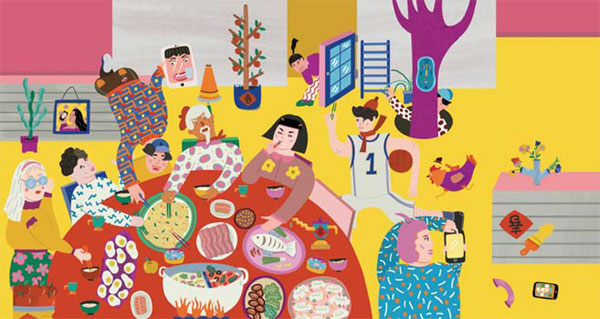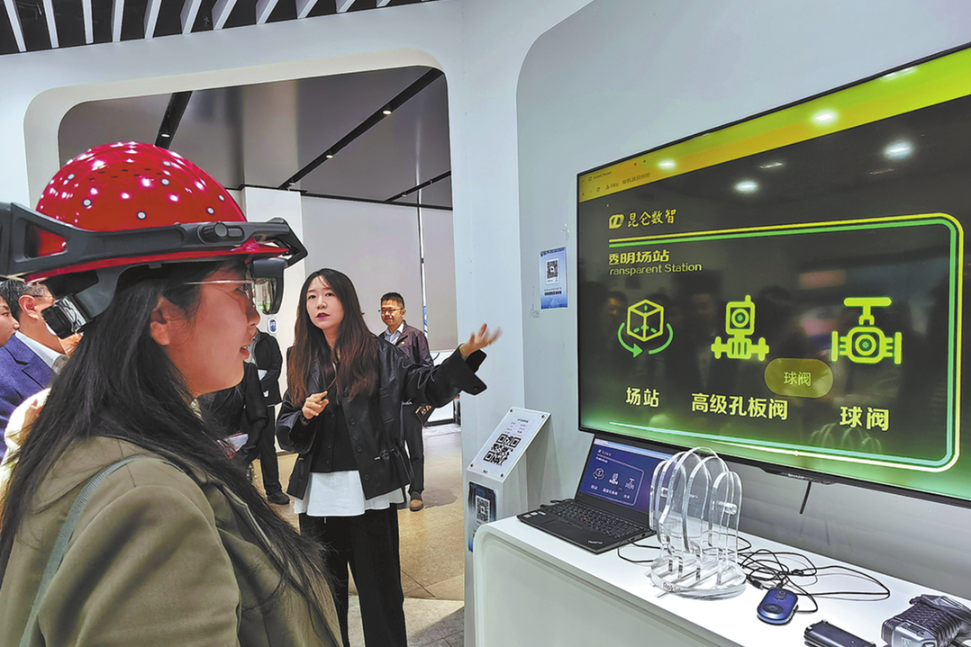When rooster makes a call

Apple gets Chinese artists to present traditional themes in a modern way for Spring Festival
As Spring Festival approaches each year, Chinese households follow the custom of hanging paintings - usually colored woodblock prints - on their doors and walls to welcome the new year.
However, the tradition has changed a little in the digital age.
One such painting now appears on gadgets' screens, with the swords of door gods replaced by karaoke microphones. One of the door gods holds a camera and a bird's cage, and behind him are skyscrapers and fancy cars.
| Above and bottom: Chinese New Year pictures take on a modern look in the creations by young Chinese artists. Photos Provided to China Daily |
The peace-themed Chinese Lunar New Year painting, created by Beijing-based artist Ye Hongxing, was first designed on a computer and then turned into a physical work of art - a mosaic of tens of thousands of stickers.
"I combined modern and traditional elements to make it interesting. They can be downloaded as wallpapers on phones and computers," says Ye.
She is one of the five artists invited by US tech giant Apple Inc to make paintings focusing on reunion, fortune, peace and harvest - traditional themes of Chinese woodblock prints for Spring Festival paintings that date back hundreds of years.
Unlike Ye, whose paintings have both electronic and printed versions, the other four artists' works are only online. But pictures by all five artists are shown on screens at subway stops and on skyscrapers, and countless phone screens to celebrate the Year of the Rooster.
"New Year pictures are used to convey people's good wishes for the coming year. They often feature fish to herald good fortune and door gods to signal peace and safety," says Ye.
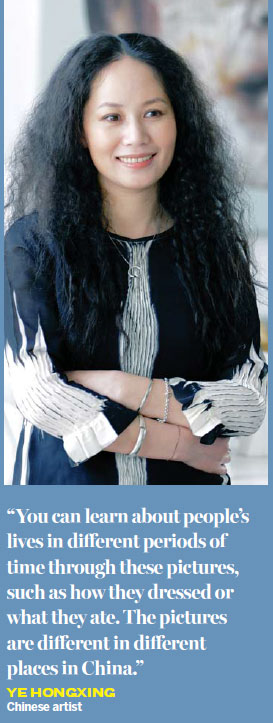
The 45-year-old was born in the Guangxi Zhuang autonomous region. Her family would hang pictures of door gods and New Year paintings on the walls when she was a child. Apart from those heralding good fortune, some traditional works were created based on stories from Peking Opera, literature and folk legends.
"You can learn about people's lives in different periods of time through these pictures, such as how they dressed or what they ate. The pictures are different in different places in China," Ye says.
Ye's work contains motifs that make the door gods look modern. The karaoke microphone, camera, bird cage, high buildings, wheels, cars and a flying astronaut all reflect different aspects of our society today, she explains.
Parts of the massive image are made up of stickers that are small in size and feature popular symbols like Hello Kitty and Angry Birds.
"It's the first time for me to create a Spring Festival picture in such a modern way. I thought they were only made by craftsmen, who teach apprentices," Ye says.
Illustrator Eszter Chen also says it's a new way to represent the traditional genre in the digital era and in a style typical of a younger generation.
The 28-year-old, Taipei-based illustrator created an electronic version focusing on the important dinner on the eve of the Chinese New Year.
In Chen's picture, friends gathered around dining tables have their phones or handheld devices with them. They either send messages bearing good wishes while eating together or have a video chat with those who are away. Even a rooster has a phone in hand - well, in wing.
"It's common to see such kinds of family gatherings. It's interesting," says Chen.
She recalls that, during her childhood, Spring Festival pictures were printed on calendars, featuring chubby children or various gods. After the family dinner, people set off fireworks and visited relatives.
Chen moved to California after primary school. It was impossible to have many relatives at such dinners there.
She says the people in her picture are friends and neighbors from a community, who gather to celebrate the occasion in the era of globalization. Dishes on their tables are from different regions of China and include hotpot, seafood, dumplings and tea.
"Times are changing, and technology is changing, too. But New Year pictures will always be our way to celebrate the festival - just through different media," says Chen.
Xie Wei, a marketing manager from Apple Inc, says that at a time when people are complaining about the disappearing traditions surrounding Spring Festival, technology is helping to revive them in a way that appeals to youth.
dengzhangyu@chinadaily.com.cn
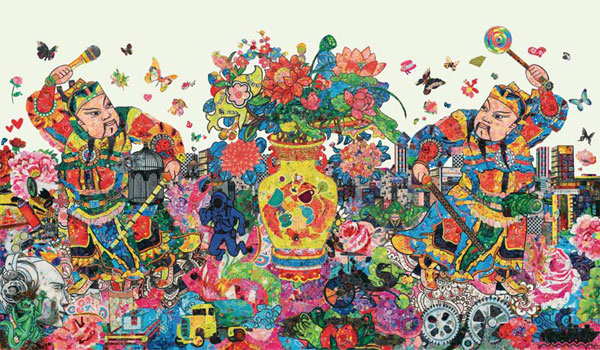
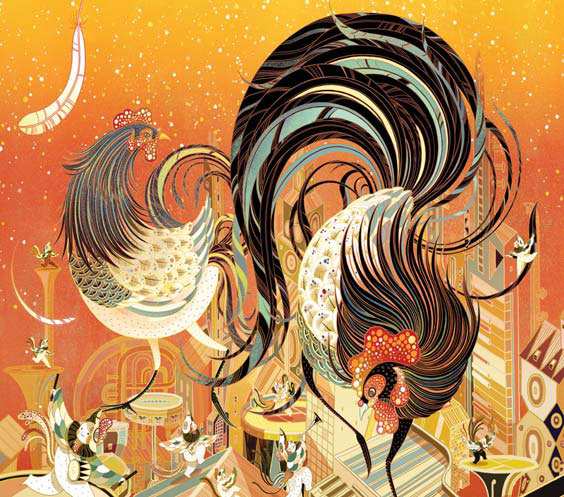
(China Daily Africa Weekly 01/27/2017 page20)
Today's Top News
- Death toll rises to 16 in Sydney's Bondi Beach shooting
- Firm stance on opening-up wins praise
- World looks to new engines for growth in 2026
- Evidence mounts of Japan's wartime atrocities
- Gunmen kill 11, wound many on Sydney beach
- Study finds Earth's deep water reservoirs
















